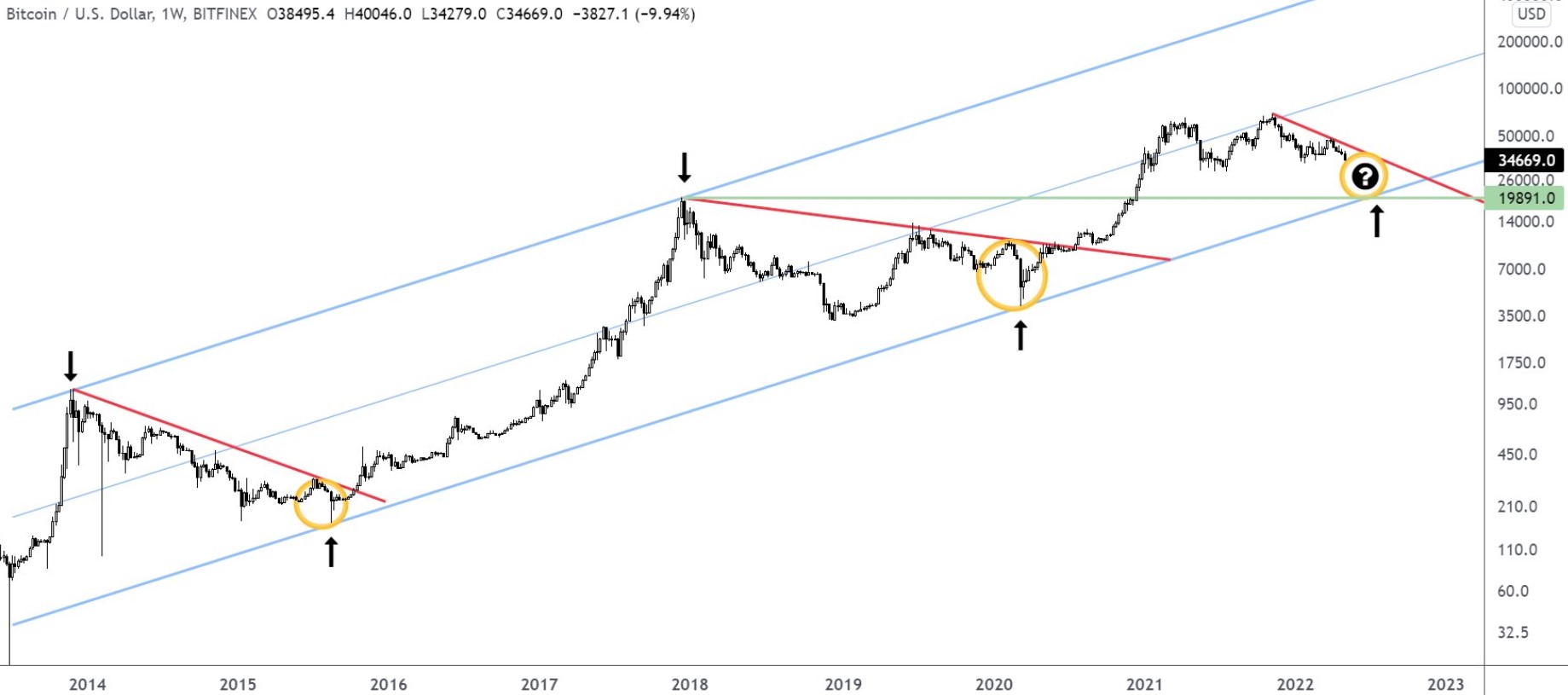
On-chain data suggests Bitcoin price is discounted, but analysts caution against expecting a rapid recovery.
There are early signs of the "dust settling" in the crypto market now that investors believe that the worst of the Terra (LUNA) collapse looks to be over. Viewing Bitcoin's chart indicates that while the fallout was widespread and quite devastating for altcoins, BItcoin (BTC) has actually held up fairly well.
Even with the May 12 drop to $26,697 marking the lowest price level since 2020 multiple metrics suggest that the current levels could represent a good entry to BTC.

The pullback to this level is notable in that it was a retest of Bitcoin’s 200-week exponential moving average (EMA) at $26,990. According to cryptocurrency research firm Delphi Digital, this metric has historically “served as a key area for prior price bottoms.”

And it wasn’t just Bitcoin that had a rough day on May 12. The stablecoin market also saw its highest level of volatility and deviation from the dollar peg since the start of the Terra saga, with Tether (USDT) experiencing the largest deviation among the major stablecoin projects as shown in the chart below from blockchain data provider Glassnode.

All four of the top stablecoins by market cap have managed to return to within $0.001 of their dollar peg, but the confidence of crypto holders in their ability to hold has definitely been shaken by the events of the past two weeks.
Related: Do Kwon summoned to parliamentary hearing following UST and LUNA crash
Bitcoin approaches its realized price
As a result of the market pullback, the price of Bitcoin is now trading the closest it has been to its realized price since 2020.

According to Glassnode, the realized price has historically “provided sound support during bear markets and has provided signals of market bottom formation when the market price trades below it.”
Previous bear markets saw the price of BTC trade below its realized price for extended periods of time, but the amount of time has actually decreased every cycle with Bitcoin only spending seven days below its realized price during the bear market of 2019–2020.

It remains to be seen if BTC will fall below the realized price should the current bear market conditions persist, and if so, how long it will last.
On-chain data shows that many crypto holders couldn’t resist the temptation of acquiring Bitcoin below $30,000, resulting in a spike in accumulation beginning on May 12 and continuing through May 15, but some analysts caution against taking this as a sign that a rapid recovery will occur from here.
If history is any indication, most #BTC Bear Market bottoms form quickly, in a volatile manner
— Rekt Capital (@rektcapital) May 13, 2022
But the accumulation ranges that form afterwards take time
Chances are there will be sufficient time to accumulate at deeply discounted prices$BTC #Crypto #Bitcoin
This sentiment was echoed by Delphi Digital, which noted that “the longer we see price build in these areas, further continuation becomes more likely.”
Delphi Digital said,
“In the event this happens, look for the following levels: 1) Weekly structure and volume structure support at $22,000–$24,000; 2) 2017 all-time high retests of $19,000–$20,000.”
The views and opinions expressed here are solely those of the author and do not necessarily reflect the views of Cointelegraph.com. Every investment and trading move involves risk, you should conduct your own research when making a decision.











































